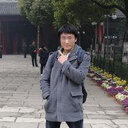Lycium Barbarum Polysaccharides Improve Retinopathy in Diabetic Sprague-Dawley Rats.
关键词
抽象
Diabetic retinopathy (DR) has become the most frequent cause of impaired visual acuity and blindness in working-age population in developed countries. Here we use diabetic rats to clarify the role of Lycium barbarum polysaccharides (LBP) on DR. We treated diabetic rats with LBP (400 mg/kg/d or 200 mg/kg/d) orally for 20 weeks. Electroretinogram (ERGs) and Laser Doppler blood flow were measured to assess the retinal function, routine histology and ultrastructural studies were performed to evaluate the morphological alterations, and immunohistochemistry, western blotting, and RT-PCR were conducted to detect the protein and mRNA levels of pro- and antiangiogenic factors. The results showed that diabetes suppressed the amplitudes of a-wave, b-wave, and oscillatory potential in ERG, reduced retinal blood flow, decreased the thickness of the retina, and increased the thickness of basement membrane of the retinal capillary. Furthermore, diabetes increased the mRNA and protein expressions of proangiogenic GFAP and VEGF and suppressed the levels of antiangiogenic PEDG. Treatment with LBP either completely or partially reversed the alterations caused by diabetes. It is concluded that the LBP protects retinal function and morphology in diabetic rats, probably through reinstallation of the balance between proangiogenic and antiangiogenic factors, which reduces neovascularization. LBP could be used as a therapeutic drug for DR.




